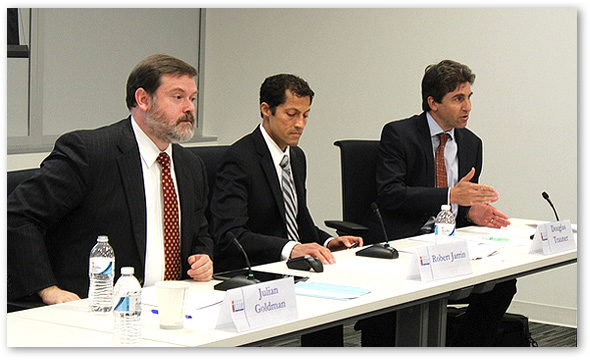 In another digital first for the FCC, we just released an interactive, web-based map that illustrates our Broadband Progress Report. This congressionally mandated report assesses how well broadband deployment and adoption is progressing in the nation. With this new map, our report is more responsive to both Congress and the American people.
In another digital first for the FCC, we just released an interactive, web-based map that illustrates our Broadband Progress Report. This congressionally mandated report assesses how well broadband deployment and adoption is progressing in the nation. With this new map, our report is more responsive to both Congress and the American people.
This map is great for a bunch of reason. First, as you zoom into the map or pan around, you can explore the intricate details of broadband availability in each and every county in the United States. These details include not just the population, and income numbers from the census, but the percentage of each county that has access to the major fixed technologies providing broadband service. This charting feature is a dynamic and robust way to investigate the data, see how different communities compare to each other, or just look at your home town.
Second, the map allows anyone access to the full set of raw data underlying the report. It used to be that maps like this were only viewed through complicated software or with specialized training. You do not need access to special software, or fancy understanding of intricate bureaucratic processes; all you need is a web browser.
Third, by publishing this map, we make our own processes more open, accountable and effective. It makes the data available to all Americans, not just specialized practitioners
A few more details. These maps are;
Read more »





 In another digital first for the FCC, we just released an interactive,
In another digital first for the FCC, we just released an interactive,  Owning a computer and gaining access to the Internet is not a luxury, but a necessity in today's world. The digital divide is growing as Americans who are "offline" cannot fully participate in the digital economy and are left behind in important areas such as education and health care. Yet, nearly 60% of low-income households do not have a desktop or laptop computer at home and 100 million Americans have not adopted broadband at home.
Owning a computer and gaining access to the Internet is not a luxury, but a necessity in today's world. The digital divide is growing as Americans who are "offline" cannot fully participate in the digital economy and are left behind in important areas such as education and health care. Yet, nearly 60% of low-income households do not have a desktop or laptop computer at home and 100 million Americans have not adopted broadband at home.
